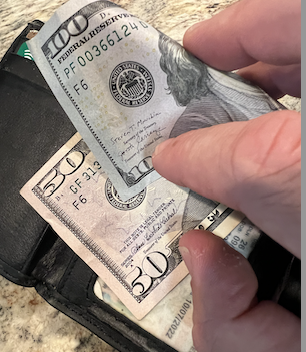 Litigation is time consuming and expensive, both in terms of the filing fees and lawyer costs, making “small claims court” a desirable path for many litigants. There, you get a hearing right away (in weeks versus months) and you don’t need a lawyer. In fact, you can fill-out the Complaint (a simple form) by hand, and the filing fee is only around $100.
Litigation is time consuming and expensive, both in terms of the filing fees and lawyer costs, making “small claims court” a desirable path for many litigants. There, you get a hearing right away (in weeks versus months) and you don’t need a lawyer. In fact, you can fill-out the Complaint (a simple form) by hand, and the filing fee is only around $100.
But there’s one big problem.
Small claims court is for “small” matters: cases worth no more than $12,000. If your case is worth more than 12K, but you file on the small claims court docket anyway, it telegraphs to the world: you value your claim at only 12K, max. You should never undervalue your case. You may be tempted to be clever and ask: What if I don’t bring all my claims at once. Can I bring only my smallest claim, first, and see how that goes?
Can Your Bring Your Smallest Claim, First?
Here’s an example. Let’s say you paid a home improvement contractor — named Concrete Jimmy — $1,500 to replace a small section of sidewalk. Only, Jimmy’s new concrete started cracking immediately and needs to be replaced. Another contractor will do it, for $1,500 so it’s a genuine “small claim” against Concrete Jimmy for $1,500, right?
But let’s say Jimmy’s new sidewalk also caused new water to divert toward the home, more so than before, allegedly, negligently causing $15,000 of damage to carpeting and items in your basement. You’ll need an expert — possibly an engineer (expensive) — to give an opinion for use in court to prove that Jimmy’s work somehow caused the water damage in the basement.
Can you litigate the small matter first by, for example, asking Concrete Jimmy for your money back — just the the $1,500, to see how it goes in small claims court, then maybe later, sue him for the damage later?
No. It’s a horrible idea.
But why?
Claim and Issue Preclusion
All states have laws governing claim or “issue” preclusion, meaning, a Plaintiff must bring all claims at once, if related to one common set of transactions or occurrences. Otherwise, issue not raised are waived forever.
People think the courts are primarily concerned with “fairness,” but that’s not true. Fairness is a goal, for certain, but it’s not the most important one. Rather, our civil litigation system exists to bring about closure and finality to a dispute, above all. Think of the family feuds of years passed. Entire towns became embroiled in disputes that languished for decades, threatening commerce. Civil litigation courts came along and gave the parties their “day-in-court,” and closure followed. So today, in a civil case, even if important new evidence surfaces after the civil jury verdict, it will not be considered, except in criminal cases.
Is that fair? No. But the system does its job: providing closure.
The Fancy Latin Terms For Claim Preclusion or Issue Preclusion
All States in the US recognize something called collateral estoppel, which means, issues litigated once cannot be litigated again. Or, stated another way, you are “estopped” or prevented from pursuing any such issue in the future. Claim preclusion is very similar. If you bring a claim for breach of contract and lose, you are “estopped” from bringing a claim for breach of contract or any other civil claim relating to the same transactions and occurrences. It’s the civil court’s version of “double jeopardy” that exists in criminal cases.
But there are some technical requirements that must be met…
Formal Requirements
In Pennsylvania, the doctrine of res judicata is applied as follows:
The purposes behind the doctrine, which bars the re-litigation of issues that either were raised or could have been raised in the prior proceeding, are to conserve limited judicial resources, establish certainty and respect for court judgments, and protect the party relying upon the judgment from vexatious litigation. In keeping with these purposes, the doctrine must be liberally construed and applied without technical restriction. Furthermore, we note that the application of res judicata requires the concurrence of four conditions between the present and prior actions: 1) identity of issues; 2) identity of causes of action; 3)identity of parties or their privies; and 4) identity of the quality or capacity of the parties suing or being sued. (emphasis added).
Yamulla Trucking & Excavating Co. v. Justofin, 771 A.2d 782, 784 (Pa. Super. Ct. 2001) (citations omitted).
Practical Implication
So what does all this mean? Going back to the original example, if you sue Concrete Jimmy for only the cost to re-do his work ($1,500) — merely to stay within the 12K jurisdictional limits of small claims court — you risk waiving the right to sue for the 15K+ damage he caused, plus triple or treble damages and attorney fees, if consumer protection law applies. Contact a small claims court attorney today, to learn more.
Let’s Get Started!
Contact us today about any civil litigation or small claims court matter. We provide a flat fee consultation to review most matters, even the most complex.
412.342.0992
